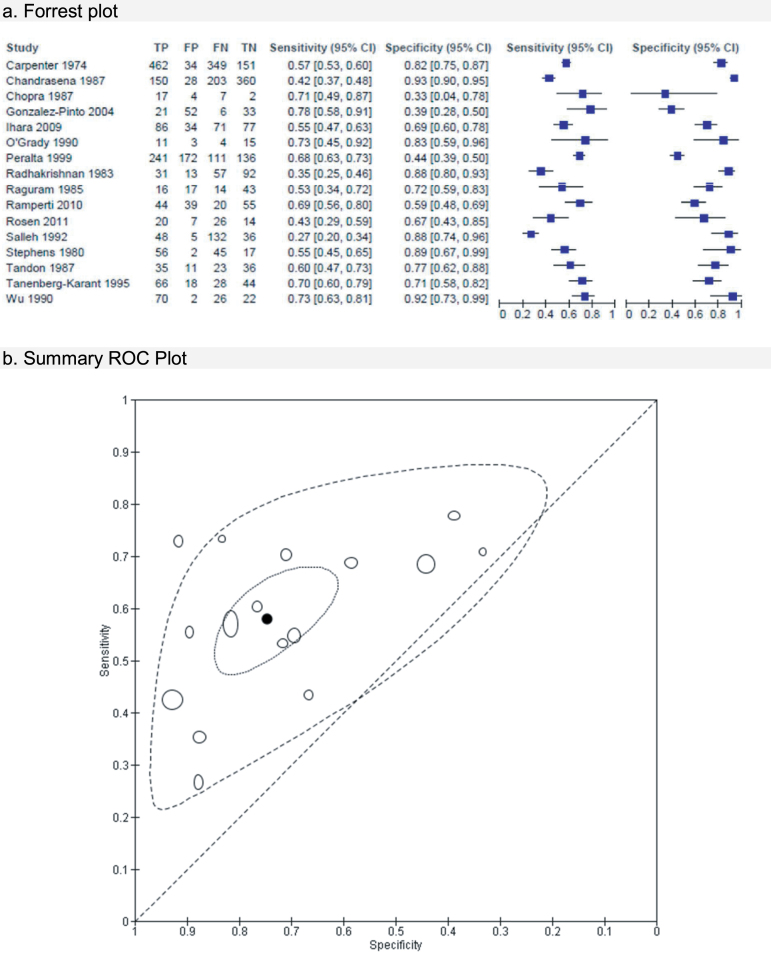Background
Early and accurate diagnosis and treatment of schizophrenia may have long-term advantages for the patient; the longer psychosis goes untreated the more severe the repercussions for relapse and recovery. If the correct diagnosis is not schizophrenia, but another psychotic disorder with some symptoms similar to schizophrenia, appropriate treatment might be delayed, with possible severe repercussions for the person involved and their family. There is widespread uncertainty about the diagnostic accuracy of First Rank Symptoms (FRS); we examined whether they are a useful diagnostic tool to differentiate schizophrenia from other psychotic disorders.
Objectives
To determine the diagnostic accuracy of one or multiple FRS for diagnosing schizophrenia, verified by clinical history and examination by a qualified professional (eg, psychiatrists, nurses, social workers), with or without the use of operational criteria and checklists, in people thought to have nonorganic psychotic symptoms.
Search Methods
We conducted searches in MEDLINE, EMBASE, and PsycInfo using OvidSP in April, June, and July 2011 and December 2012. We also searched MEDION in December 2013.
Selection Criteria
We selected studies that consecutively enrolled or randomly selected adults and adolescents with symptoms of psychosis and assessed the diagnostic accuracy of FRS for schizophrenia compared to history and clinical examination performed by a qualified professional, which may or may not involve the use of symptom checklists or based on operational criteria such as ICD and DSM.
Data Collection and Analysis
Two review authors independently screened all references for inclusion. Risk of bias in included studies were assessed using the QUADAS-2 instrument. We recorded the number of true positives (TP), true negatives (TN), false positives (FP), and false negatives (FN) for constructing a 2×2 table for each study or derived 2×2 data from reported summary statistics such as sensitivity, specificity, and/or likelihood ratios.
Main Results
We included 21 studies with a total of 6253 participants (5515 were included in the analysis). Studies were conducted from 1974 to 2011, with 80% of the studies conducted in the 1970s, 1980s, or 1990s. Most studies did not report study methods sufficiently and many had high applicability concerns. In 20 studies, FRS differentiated schizophrenia from all other diagnoses with a sensitivity of 57% (50.4%–63.3%), and a specificity of 81.4% (74%–87.1%). In 7 studies, FRS differentiated schizophrenia from nonpsychotic mental health disorders with a sensitivity of 61.8% (51.7%–71%) and a specificity of 94.1% (88%–97.2%). In 16 studies, FRS differentiated schizophrenia from other types of psychosis with a sensitivity of 58% (50.3%–65.3%) and a specificity of 74.7% (65.2%–82.3%, figure 1). However, the review is at risk of incorporation bias as FRS were part of the reference standard for most of the included studies. As a consequence, the diagnostic accuracies may be overestimated.
Fig. 1.
First rank symptoms: schizophrenia vs other psychotic illnesses. (a) Forrest plot and (b) summary ROC plot.
Authors’ Conclusions
The synthesis of old studies of limited quality in this review indicates that FRS correctly identifies people with schizophrenia 75%–95% of the time. The use of FRS to diagnose schizophrenia in triage will incorrectly diagnose around 5–19 people in every 100 who have FRS as having schizophrenia and specialists will not agree with this diagnosis. These people will still merit specialist assessment and help due to the severity of disturbance in their behavior and mental state. Again, with a sensitivity of FRS of 60%, reliance on FRS to diagnose schizophrenia in triage will not correctly diagnose around 40% of people that specialists will consider to have schizophrenia. Some of these people may experience a delay in getting appropriate treatment. Others, whom specialists will consider to have schizophrenia, could be prematurely discharged from care, if triage relies on the presence of FRS to diagnose schizophrenia. Empathetic, considerate use of FRS as a diagnostic aid—with known limitations—should avoid a good proportion of these errors.
We hope that newer tests, such as the Operational Criteria Checklist for Psychotic Illness and Affective Illness (OPCRIT+), the Schedule for Affective Disorders and Schizophrenia for School-Age Children (K-SADS), the brain imaging technique voxel-based morphometry, or blood tests—to be included in future Cochrane reviews—will show better results. However, symptoms of first rank can still be helpful where newer tests are not available—a situation which applies to the initial screening of most people with suspected schizophrenia. FRS remain a simple, quick, and useful clinical indicator for an illness of enormous clinical variability. Details are reported in the full publication.1
Funding
NIHR Cochrane Programme Grant 2011 (Reference number: 10/4001/15, UK).
Acknowledgment
The authors have declared that there are no conflicts of interest in relation to the subject of this study.
Reference
- 1. Soares-Weiser K, Maayan N, Bergman H, et al. First rank symptoms for schizophrenia. Cochrane Database Syst Rev. 2015;1:CD010653. [DOI] [PMC free article] [PubMed] [Google Scholar]



